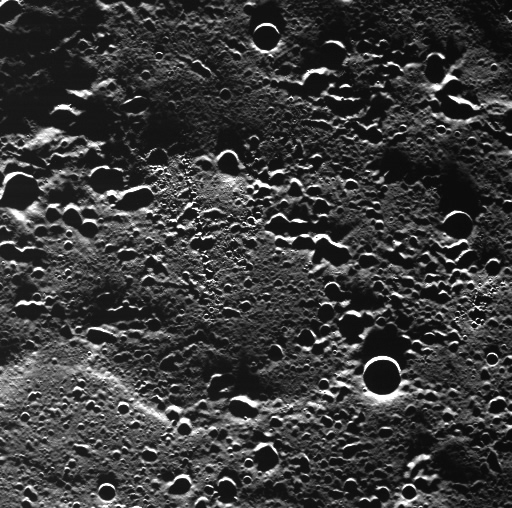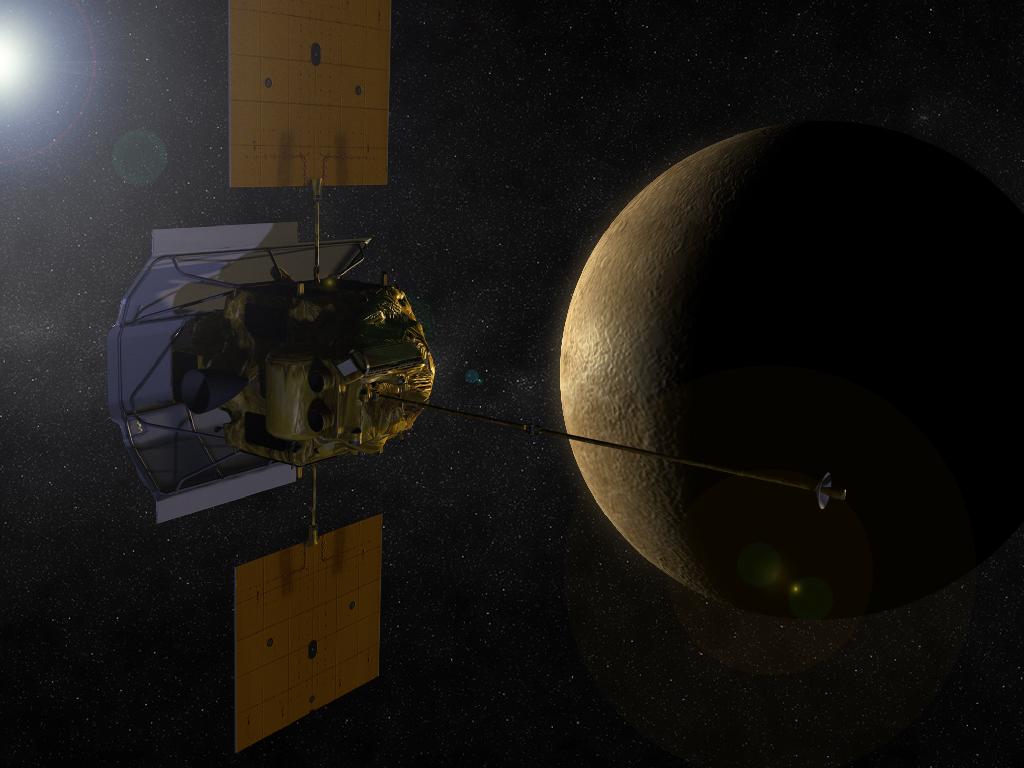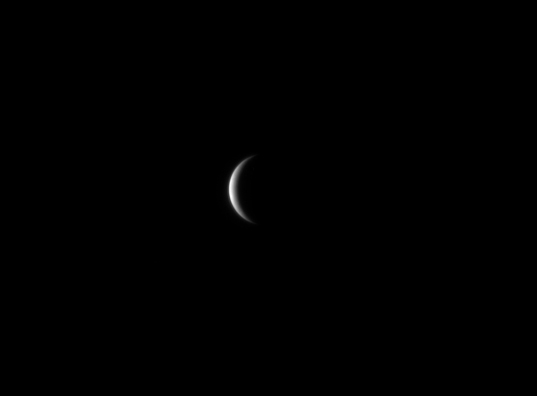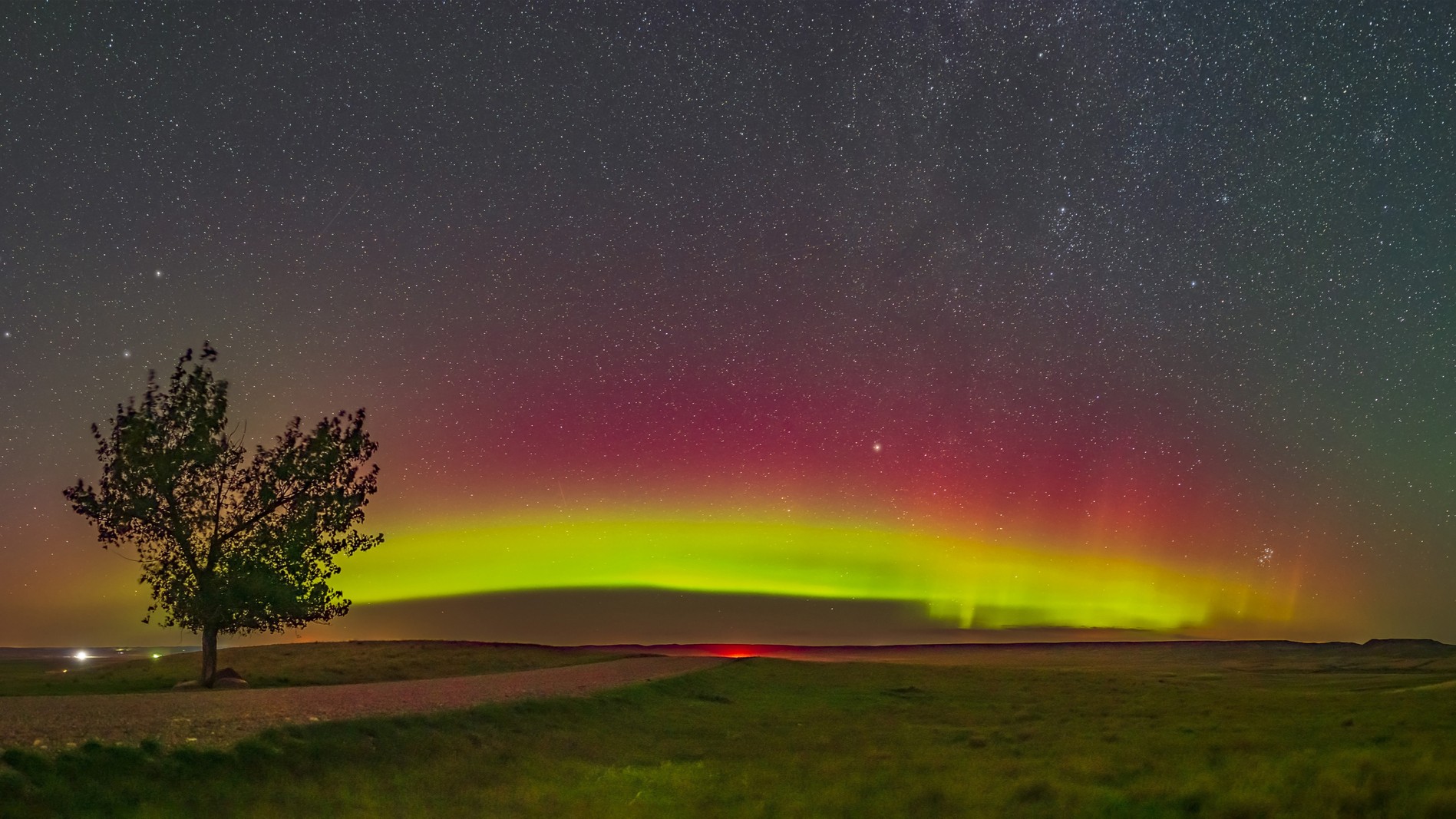Mercury Photos From NASA's Messenger Probe, Part 1: June 2007—March 2011
Mercury Craters, Up Close
This historic first orbital image of Mercury was taken by NASA's Messenger spacecraft on March 29, 2011, 37 years to the day after Mariner 10's historic first flyby of the planet. Labels show several craters that were named on the basis of Mariner 10 images, as well as Debussy, Matabei, and Berkel, which were named on the basis of on earlier Messenger flyby images. The surface area within the white lines is terrain previously unseen by spacecraft, and the star indicates the location of the south pole.
Mercury's Terra Incognita Revealed
This wide-angle camera photo from Nshowing a never-before-imaged area of Mercury’s surface was taken from an altitude of ~450 km (280 miles) above the planet during the spacecraft’s first orbit with the camera in operation. The area is covered in secondary craters made by an impact outside of the field of view. Some of the secondary craters are oriented in chain-like formations.
MESSENGER in Orbit
An artist's conception shows the MESSENGER spacecraft in orbit around Mercury.
Mercury in Color Vision
In this color image of Mercury taken by the wide-angle camera on NASA's Messenger spacecraft the rocky planet from orbit as it appeared on March 29, 2011. This view was taken using Messenger's 1000 nm, 750 nm, and 430 nm filters, which appear in red, green, and blue, respectively. Several craters appear to have excavated compositionally distinct low-reflectance (brown-blue in this color scheme) material, and the bright rays of Hokusai crater to the north cross the image.
NASA Sends Mercury a MESSENGER
While NASA's Messenger spacecraft arrived in orbit around Mercury on March 17, 2011, the spacecraft spent more than six years traveling through space to reach the planet, and even fly by Mercury 3 times before entering orbit (once in 2008 and twice in 2009). Here, Messenger, the first probe sent to Mercury in 30 years and the first ever to orbit the planet, rockets into the early morning sky above Cape Canaveral Air Force Station at 2:15:56 a.m EDT 615:56 GMT) Aug. 3, 2004 abo(0ard a Boeing Delta 2 launch vehicle.
Peeling Mercury's Layers
Mercury is the closest planet to the sun and has a thin atmosphere, no air pressure and an extremely high temperature. Take a look inside the planet.
Gearing Up for Mercury Flybys
On Jan. 9, 2008, the MESSENGER spacecraft snapped one of its first images of Mercury at a distance of about 2.7 million kilometers (1.7 million miles) from the planet.
Breaking space news, the latest updates on rocket launches, skywatching events and more!
Buzzing Mercury
The image taken by the MESSENGER spacecraft on Sept. 27, 2009. shows the planet Mercury as it appeared to the probe 55 hours prior to the closest approach of its third flyby, which was set for Sept. 29 2009 at 5:55 pm EDT.
MESSENGER Flyby
This view is one of the first from the MESSENGER probe's Oct. 6, 2008 flyby of Mercury.
Mercury Spider
The MESSENGER spacecraft obtained high-resolution images of the floor of the Caloris basin on Jan. 14, 2008. Near the center of the basin, an area unseen by Mariner 10, this remarkable feature – nicknamed "the spider" by the science team – was revealed. A set of troughs radiates outward in a geometry unlike anything seen by Mariner 10.
Mercury's Atmosphere
Color differences on Mercury are subtle, but they reveal important information about the nature of the planet's surface material. A number of bright spots with a bluish tinge are visible in this image taken by MESSENGER on Jan. 14, 2008, which is a mosaic from three different images.

Space.com is the premier source of space exploration, innovation and astronomy news, chronicling (and celebrating) humanity's ongoing expansion across the final frontier. Originally founded in 1999, Space.com is, and always has been, the passion of writers and editors who are space fans and also trained journalists. Our current news team consists of Editor-in-Chief Tariq Malik; Editor Hanneke Weitering, Senior Space Writer Mike Wall; Senior Writer Meghan Bartels; Senior Writer Chelsea Gohd, Senior Writer Tereza Pultarova and Staff Writer Alexander Cox, focusing on e-commerce. Senior Producer Steve Spaleta oversees our space videos, with Diana Whitcroft as our Social Media Editor.











